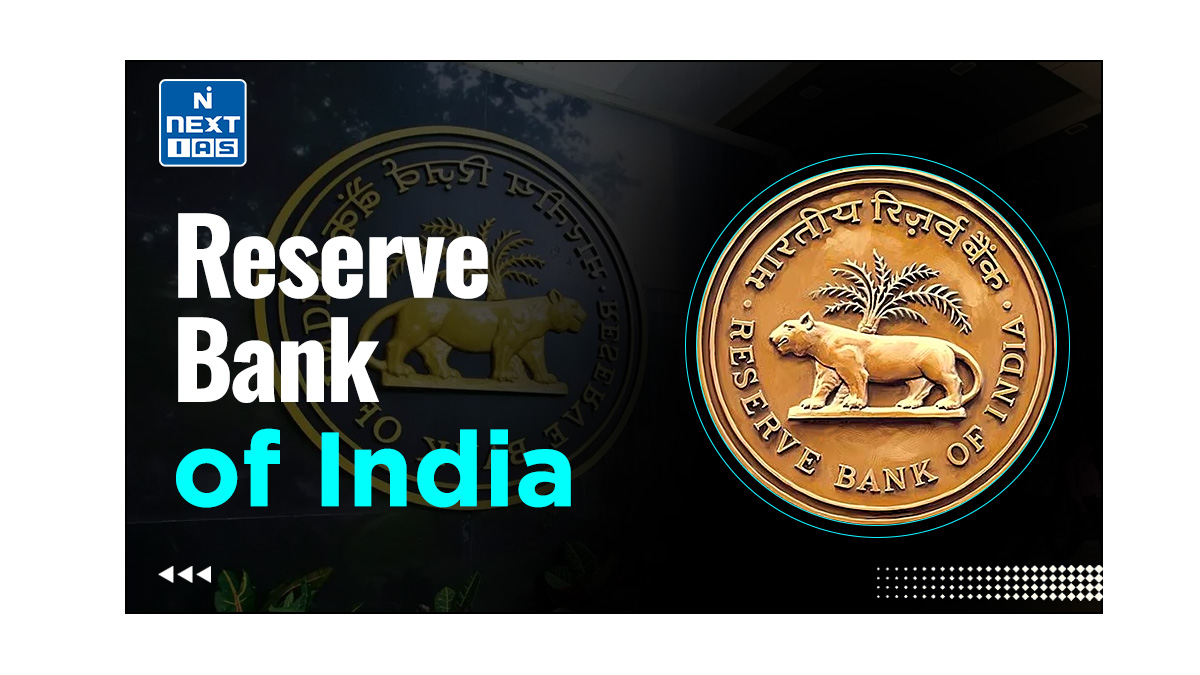
Foreign Direct Investment (FDI) is a crucial catalyst for economic growth and development in the contemporary globalized world. This holds particular significance for a developing country like India. This article aims to study in detail Foreign Direct Investment (FDI), its meaning, components, categories, significance, criticisms, and FDI Policy in India.
What is Foreign Direct Investment (FDI)?
Foreign Direct Investment (FDI) is a type of investment whereby residents of one country (home country) acquire ownership of assets of a firm in another country (host country) for controlling the production, distribution, and other activities.
Example of FDI
- Various software companies like Microsoft which is initially based in the United States but has opened its subsidiaries in different parts of India.
- Suzuki of Japan had joint ventures with Maruti Udyog Ltd to start Maruti Suzuki in India.
- SBI Life Insurance is a joint venture between the BNP Paribas Assurance of France and the State Bank of India (SBI).
3 Components of Foreign Direct Investment
Equity Capital
Equity Capital refers to the value of the shares of an enterprise held by a foreign direct investor.
Reinvested Earnings
- Reinvested Earnings consists of the foreign direct investors’ share of earnings which has not been distributed as dividends by affiliates or the earnings not remitted to the direct investor.
- Such retained profits by affiliates are reinvested.
Intra-Company Debt or Intra-Company Loans
Intra-Company Debt or Intra-Company Loans transactions refer to short or long-term lending and borrowing of funds between direct investors or enterprises and affiliate enterprises.
Categories of FDI
Horizontal FDI
A horizontal direct investment is a type of Foreign Direct Investment wherein an investor sets up and operates the same type of business in a foreign country as it operates in its home country.
Vertical FDI
- A vertical investment is a type of Foreign Direct Investment wherein the investor establishes or acquires in a foreign country a businesses which is different but related to his/her main business.
- For example, when a manufacturing company acquires a stake in a foreign company that supplies the parts or raw materials needed for producing its finished goods, it is referred to as vertical investment.
Conglomerate FDI
- A conglomerate type of Foreign Direct Investment occurs when a company or individual invests in a foreign business that is unrelated to their existing business operations in their home country.
- Since this type of investment involves entering a new industry in which the investor has no experience.
- It often occurs in the form of a joint venture with a foreign company already operating in the country.
Methods of FDI
Various method of making Foreign Direct Investment are explained below.
Greenfield Investment
- Greenfield investment is the one wherein the investors build up their own factory/organisation in a foreign country and train local people to work in them.
- For instance, McDonald’s and Starbucks started everything from scratch and trained their employees themselves.
Brownfield Investment
- In this method, foreign companies do not build something from scratch in another country.
- These companies, rather, expand their business through cross-border Mergers and Acquisitions, which allows them to immediately start their operations without much preparations.
Difference between FDI and FPI
| Dimensions | Foreign Direct Investment | Foreign Portfolio Investment |
|---|---|---|
| Involvement | Involved in management and ownership control, with a long-term interest | No active involvement in management. Investment instruments that are more easily traded, less permanent, and do not represent a controlling stake in an enterprise. |
| Form | When a company invests in a foreign country to set up production or some other facility. | When a foreign company purchases equity in a company through stock markets. |
| Degree of Control | Enables a degree of control in the company. | No control in the company. |
| Threshold | Any investment of more than 10% is considered to be Foreign Direct Investment. | Allowed to invest up to 10% of the paid-up capital. |
| Sell Off/Pull Out | More difficult to pull out of or sell off. | Relatively easy to pull out or sell securities acquired, because they are liquid. |
| Comes From | Tends to be undertaken by Multinational organisations. | Comes from more diverse sources e.g. a small company’s pension fund or through mutual funds held by individuals; investment via equity instruments (stocks) or debt (bonds) of a foreign enterprise. |
| Type of Market | Flows into the primary market. | Flows into the secondary market. |
| Tenure | Long-term investments. | Short-term investments. |
| What is Invested/Transferred | In addition to financial assets, it involves the transfer of non-financial assets as well, such as technology, intellectual capital, etc. | Only investment of financial assets. |
| Purpose | Targets a specific enterprise. | Increasing capital availability in general. |
| Volatility | Considered to be more stable. | Less Stable. |
| Contribution | Contributes significantly in the growth of the economy. | Results only in capital flow. |
Foreign Direct Investment Policy in India
- The Department of Industrial Policy and Promotion (DIPP), which has now been renamed as the Department for Promotion of Industry and Internal Trade (DPIIT), is the nodal Department for the formulation of the policy on Foreign Direct Investment.
- It also maintains and manages data on inward Foreign Direct Investment into India based on the remittances reported by the Reserve Bank of India.
- The FDI policy is reviewed regularly to make it more and more investor-friendly to attract more Foreign Direct Investment.
- The FDI limit is not uniform for all sectors/activities and is different for different sectors.
- Also, there are some sectors wherein Foreign Direct Investment is prohibited in India.
FDI Routes in India
Foreign Direct Investment in India can be made through various routes as explained below.
Automatic Route
In this, the foreign entity does not need to get any prior approval of the government or the RBI.
Government Route
- In this, the foreign entity is required to take the approval of the government.
- The Foreign Investment Facilitation Portal (FIFP) facilitates the single window clearance of applications that are through the approval route.
- It is administered and regulated by the Department for Promotion of Industry and Internal Trade (DPIIT), Ministry of Commerce and Industry.
Categories of FDI in India
In India, Foreign Direct Investment is categorised into four categories:
Category 1 FDI
Sectors in which Foreign Direct Investment is permitted up to 100% under automatic route.
Category 2 FDI
Sectors in which Foreign Direct Investment is permitted up to 100% under the Government route.
Category 3 FDI
Sectors in which Foreign Direct Investment is permitted are beyond certain limits with the government.
Category 4 FDI
Sectors in which Foreign Direct Investment is permitted up to a certain limit under both the routes (Automatic and Government) subject to applicable laws/ regulations, security and other conditionalities.
Factors Deciding FDI
- Wage Rates: A significant incentive for companies to invest abroad is to outsource labor-intensive production to countries with lower wage costs. The Indian subcontinent, in particular, is a major hub for labor outsourcing.
- Skilled Labour Force: Some industries require a skilled labour force for their operation. For example, India has attracted significant investment in call centers due to its large English-speaking population and relatively low wages.
- Tax Rates: Large Multinational Companies tend to invest in those countries that have lower corporate tax rates. For example, Google and Microsoft have invested heavily in Ireland due to low corporate tax rate there.
- Economic Growth Potential: It is often targeted to sell goods directly to the country of the investment. Thus, the size of the population and the economic growth potential play a crucial role in attracting investment. For instance, a large country with a substantial and willing consumer base offers a significant market for investors to expand their sales. In contrast, smaller countries may present a disadvantage, as investing in a limited population might not be as economically viable.
- Political Stability: Foreign Direct Investment involves risks, and countries with unstable political conditions can be a major deterrent for investors. Furthermore, corruption and distrust in institutions can also discourage investment in that country.
- Exchange Rates: A weak Exchange Rate in the host country, usually, attracts more FDI by making asset purchases more affordable for companies. However, exchange rate volatility may deter investment due to increased financial uncertainty.
- Free Trade: Free trade areas and low non-tariff barriers help in attracting more investments into the country.
- Other Factors: Numerous other factors determine the inflow of Foreign Direct Investment, such as the type of industry, macroeconomic stability, political openness, etc.
Importance of FDI
- Increase in Production: Encouraging FDI inflow can boost investment in crucial areas like infrastructure development, potentially leading to an increase in capital goods production. For example, investing in power generation can enhance electric power availability, which in turn supports the growth of additional industries.
- Increase in Capital Inflow: Foreign Direct Investment facilitates increased capital inflow into countries, particularly in crucial sectors. This helps address the shortage of money and materials, thus accelerating the growth of the country.
- Increase in Employment Opportunities: FDI in developing countries has strengthened the service sectors, boosting employment opportunities and contributing to economic growth. Additionally, they have helped reduce educated unemployment by providing job opportunities for the skilled workforce.
- Strengthening of Financial Services: They can improve a country’s financial services by entering its banking sector and expanding into areas such as merchant banking and portfolio investment. This expansion can foster the growth of more companies and strengthen the capital market of the country.
- Exchange Rate Stability: A steady and continuous supply of foreign exchange is essential for maintaining exchange rate stability. Its inflow is pivotal in this regard, as it supports the Reserve Bank of India (RBI) in maintaining a robust foreign exchange reserve position, often exceeding USD 1 billion.
- Economic Development: They are instrumental in developing underdeveloped regions by establishing industries, which often transform these areas into industrial centers. This, in turn, leads to improvements in the standard of living for the local population.
- Efficient Use of Natural Resources: It helps in utilizing a country’s natural resources more effectively, ensuring that resources, which might otherwise remain underused, are brought into productive use.
- Improved Knowledge and Technology: A key benefit for host countries from such investments is the access to new technologies and expertise provided by foreign companies. This influx of advanced knowledge and skills can significantly boost the country’s growth potential.
- Maintenance of Balance of Payments: Its growth can help stabilize the Balance of Payments and support the maintenance of a country’s currency value.
Criticisms of FDI
- Foreign ownership of strategically important sectors may not always benefit the host countries. Foreign investors might diminish the value of the business, potentially selling unprofitable parts of the company to local, less sophisticated investors.
- Foreign companies can use their local subsidiaries’ assets as collateral to secure low-cost, local loans. Instead of reinvesting these funds locally, they might lend them back to the parent company.
- Through such investments, multinational corporations (MNCs) can acquire controlling rights in foreign countries.
- Foreign Direct Investment can sometimes be used as a means to bypass local environmental regulations. Also, developing countries are tempted to reduce environmental regulations to attract more of such investments.
- Foreign Direct Investment can allow foreign multinationals to control raw materials and exploit the labor force without contributing to the local community’s development.
- The entry of large firms can sometimes displace local businesses, driving them out of the market due to their inability to compete with the larger companies.
Conclusion
Foreign Direct Investment (FDI) plays a crucial role in shaping the economy at the national as well as global levels. However, along with potential benefits, it also brings certain challenges. By understanding its significance and managing its potential downsides, countries can leverage it to achieve sustainable economic growth and development.
GS - 3





